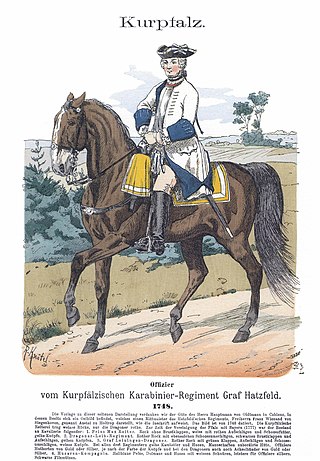
The Atlantic Wall was an extensive system of coastal defences and fortifications built by Nazi Germany between 1942 and 1944 along the coast of continental Europe and Scandinavia as a defence against an anticipated Allied invasion of Nazi-occupied Europe from the United Kingdom, during World War II. The manning and operation of the Atlantic Wall was administratively overseen by the German Army, with some support from Luftwaffe ground forces. The Kriegsmarine maintained a separate coastal defence network, organised into a number of sea defence zones.

Organisation Todt was a civil and military engineering organisation in Nazi Germany from 1933 to 1945, named for its founder, Fritz Todt, an engineer and senior member of the Nazi Party. The organisation was responsible for a huge range of engineering projects both in Nazi Germany and in occupied territories from France to the Soviet Union during the Second World War. The organisation became notorious for using forced labour. From 1943 until 1945 during the late phase of the Third Reich, OT administered all constructions of concentration camps to supply forced labour to industry.

Fritz Todt was a German construction engineer and senior figure of the Nazi Party. He was the founder of Organisation Todt (OT), a military-engineering organisation that supplied German industry with forced labour, and served as Reich Minister for Armaments and Ammunition in Nazi Germany early in World War II, directing the entire German wartime military economy from that position.
Mountain Corps Norway was a German army unit during World War II. It saw action in Norway and Finland.

Rittmaster is usually a commissioned officer military rank used in a few armies, usually equivalent to Captain. Historically it has been used Germany, Austria-Hungary, Scandinavia, and some other countries.

The National Socialist Motor Corps was a paramilitary organization of the Nazi Party (NSDAP) that officially existed from May 1931 to 1945. The group was a successor organisation to the older National Socialist Automobile Corps, which had existed since April 1930.

The Deutsches Jungvolk in der Hitlerjugend was the separate section for boys aged 10 to 13 of the Hitler Youth organisation in Nazi Germany. Through a programme of outdoor activities, parades and sports, it aimed to indoctrinate its young members in the tenets of Nazi ideology. Membership became fully compulsory for eligible boys in 1939. By the end of World War II, some had become child soldiers. After the end of the war in 1945, both the Deutsches Jungvolk and its parent organization, the Hitler Youth, ceased to exist.

The government of Nazi Germany was a totalitarian dictatorship governed by Adolf Hitler and the Nazi Party according to the Führerprinzip. Nazi Germany was established in January 1933 with the appointment of Adolf Hitler as Chancellor of Germany, followed by suspension of basic rights with the Reichstag Fire Decree and the Enabling Act which gave Hitler's regime the power to pass and enforce laws without the involvement of the Reichstag or German president, and de facto ended with Germany's surrender in World War II on 8 May 1945 and de jure ended with the Berlin Declaration on 5 June 1945.

La Pallice is the commercial deep-water port of La Rochelle, France.

The Wehrmacht were the unified armed forces of Nazi Germany from 1935 to 1945. It consisted of the Heer (army), the Kriegsmarine (navy) and the Luftwaffe. The designation "Wehrmacht" replaced the previously used term Reichswehr and was the manifestation of the Nazi regime's efforts to rearm Germany to a greater extent than the Treaty of Versailles permitted.
Franz Wilhelm Seidler is a German historian, author and expert on German military history. From 1973 to 1998, he was a professor of Modern History at the Bundeswehr University Munich. Since retirement, he has published works of revisionist nature in extreme right-wing publishers, such as Pour le Mérite Verlag.

Operation Weserübung was the invasion of Denmark and Norway by Nazi Germany during World War II. It was the opening operation of the Norwegian Campaign.
German U-boat bases in occupied Norway operated between 1940 and 1945, when the Kriegsmarine, converted several naval bases in Norway into submarine bases. Norwegian coastal cities became available to the Kriegsmarine after the invasion of Denmark and Norway in April 1940. Following the conclusion of the Norwegian Campaign, the occupying Germans began to transfer U-boats stationed in Germany to many Norwegian port cities such as Bergen, Narvik, Trondheim, Hammerfest and Kirkenes. Initial planning for many U-boat bunkers began in late 1940. Starting in 1941, the Todt Organisation began the construction of bunkers in Bergen and Trondheim. These bunkers were completed by Weyss & Freytagg AG between 1942 and 1943.

Franz Xaver Dorsch was a German civil engineer who became the chief engineer of the Organisation Todt (OT), a civil and military engineering group in Nazi Germany that was responsible for a huge range of engineering projects at home and in the territories occupied by the Germans during the Second World War. He played a leading role in many of the Third Reich's biggest engineering projects, including the construction of the Siegfried Line (Westwall), the Atlantic Wall and numerous other fortifications in Germany and occupied Europe. Following the war, he founded the Dorsch Consult consulting engineering company in Wiesbaden.

The Todt Battery, also known as Batterie Todt, was a battery of coastal artillery built by Nazi Germany during World War II, located in the hamlet of Haringzelles, Audinghen, near Cape Gris-Nez, Pas de Calais, France.
The comparative ranks of Nazi Germany contrasts the ranks of the Wehrmacht to a number of national-socialist organisations in Nazi Germany from 1933 to 1945 in a synoptic table. Nazi organisations used a hierarchical structure, according to the so-called Führerprinzip, and were oriented in line with the rank order system of the Wehrmacht.
Luftwaffe construction units were established in 1939 from Reichsarbeitsdienst units transferred to the Luftwaffe, and reinforced with technically competent older conscripts, later also with prisoners of war and foreign volunteers (Hiwis). The main task was the construction and maintenance of military air bases. In 1944 the bulk of the construction units were transferred to the Organization Todt; those remaining under Luftwaffe control becoming Luftwaffe pioneers.
Ranks and insignia of Organisation Todt show the pay grades, wage groups, and paramilitary ranks used by Organisation Todt.
Legion Speer was a Nazi German paramilitary motor transportation corps founded in 1942. The members of the Legion were non-German citizens, and as such could not belong to the Nationalsozialistisches Kraftfahrkorps (NSKK). The legion was disbanded in 1944, and its members absorbed into the Transportkorps Speer. It was named after Albert Speer.
Transportkorps Speer was created in 1944 from Legion Speer and the units of the National Socialist Motor Corps that was serving the Organisation Todt. Shortly after its creation it became subordinated to the Wehrmacht. Yet, its major mission remained in support of OT, which at this time was mainly engaged in rebuilding and repair of bomb damaged industrial facilities and housing complexes. Transportkorps Speer was organized in motor transportation battalions and regiments, supported by depot, repair, engineering, signal, and medical units.
















